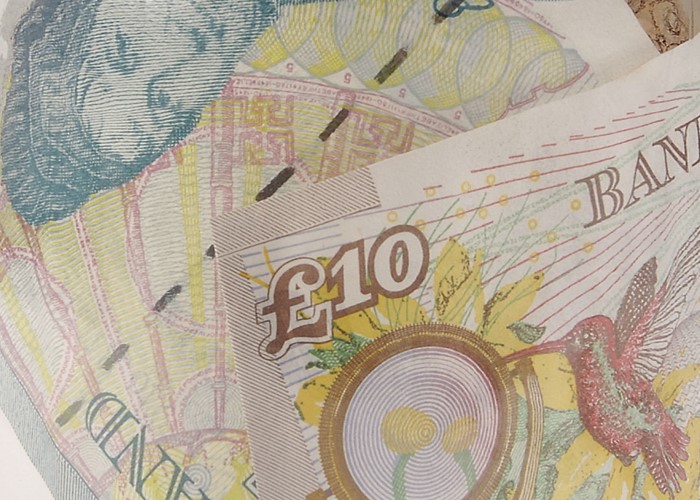Ditch your rubbish savings rate

Believe it or not, some savings accounts are now paying a real return of minus 1.77%! Find out how to get a better account today.
Low inflation, or indeed deflation, should be good news for savers because when prices are falling, the rate on your savings is rising in real terms. Well, that's the theory. But that doesn't change the fact that the rates on many savings accounts are still pitifully low.
In April...
The latest annual inflation figures show that the Consumer Prices Index (CPI) - the government's favoured measure of inflation - was 2.3% in the year to April. In other words, the CPI is telling us that prices are 2.3% higher than they were 12 months ago.
At the same time, the Retail Prices Index (RPI) slipped further to minus 1.2%, indicating that prices are actually 1.2% lower than they were a year ago, and revealing that deflation has taken an even stronger hold.
But why are the two measures different? Well, the CPI measure doesn't take mortgage interest payments into account, unlike the RPI. And since many borrowers are now enjoying lower mortgage repayments following a series of base rate cuts, the RPI has plummeted even further into deflationary territory.
Real returns
It's reasonable to think if prices are falling - or at least are rising at a slower rate than they were - your savings have greater purchasing power. But, according to lovemoney.com partner, Moneyfacts the average instant access savings account is paying a pathetic rate of 0.65% - a mere 0.15% above the ultra low bank base rate.
And the real returns from the average savings account make even more dismal reading. After basic rate tax (20%) and inflation using the CPI has been deducted, the real return is negative at minus 1.77%. While the real return using the RPI is just 1.73%.
It's even worse if you're a mortgage-free pensioner, who relies on your savings for an income. You won't be benefiting from a cheaper mortgage, while your savings rates have plummeted.
As if all that wasn't bad enough, recent research claims inflation is a much greater enemy if you have already retired. Pensioner inflation for the over-75s has been put at 3.9% according to Alliance Trust. This is a massive 70% higher than the official rate. So, the real return for pensioners from the average easy access account (after basic rate tax and inflation) is minus 3.38%.
How can you boost your savings rate?
It's crystal clear no saver should settle for the rate paid by an average account.
But the saving markets is a bit of a crazy place right now. Take, for example, the latest issues of National Savings & Investments' (NS&I) index-linked savings certificates, which offer a rate of RPI + 1%. Thankfully, in deflationary periods, index-linking is ignored. But that means the basic return over the last year is only 1% (albeit tax-free). NS&I might very well claim this is an inflation-battering rate, but it seems hardly worth bothering with.
So, where's the smart money going these days?
Fixed rate bonds
There are at last tentative signs that the savings market is starting to recover, and competition has been hotting-up in one particular area: fixed rate bonds.
The great news is it's now pretty easy to pick up a bond which pays at least 4%. This is much better than the average no notice return of 0.65%. But it's a shame you'll have to sacrifice access to your cash to earn a better rate.
I'm also concerned that the fixed rate you lock into might not stay competitive throughout the term you choose. When the economy finally recovers, the base rate is expected to shoot up, which will improve the returns available from variable rate accounts. So today's bond rates could get left behind.
For this reason, I would go for a shorter term bond which lasts for no more than two years. My favourite is the two-year, market-leading ICICI Bank UK HiSave Fixed Rate Account which pays 4.35%. To find out more about fixed rate bonds, take a look at Earn a top guaranteed return on your savings.
Regular savers
If you don't have a lump sum to lock away and you prefer to save monthly, there are some great regular saver accounts up for grabs right now. This time my top choice is the Barclays Monthly Savings Account which pays a fantastic fixed rate of 6% AER for a year.
Easy access
The rates just aren't as good on ordinary savings account with instant access. But if that's what you need, make sure you choose the best. The market-leader today is the ING Direct Savings Account with a rate of 2.75%. True, that's not as impressive as the return on bonds or regular savers, but it's still way ahead of the market average.
What's more, the rate includes a fixed bonus of 2.22%, which guarantees a minimum return in the first year.
Tax-free returns
And finally, you can boost your rate by taking a tax-free return from a cash ISA. The best instant access account is the Golden ISA from Barclays which pays 3.61%. To get the same rate in taxable account, you would need to earn 4.51% if you're a basic rate taxpayers, or 6.01% if you're higher rate taxpayers.
If you prefer, you can lock your savings away in a fixed rate ISA. Again, my maximum two-year rule applies, so the best-buy over this term is the Halifax ISA Saver which pays 3.50% on savings of £500 plus.
Compare savings accounts at lovemoney.com
More: I loathe these savings accounts | Online savings accounts versus the rest
Most Recent
Comments
Be the first to comment
Do you want to comment on this article? You need to be signed in for this feature








